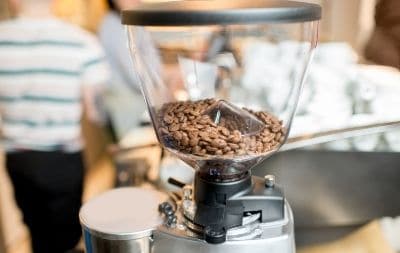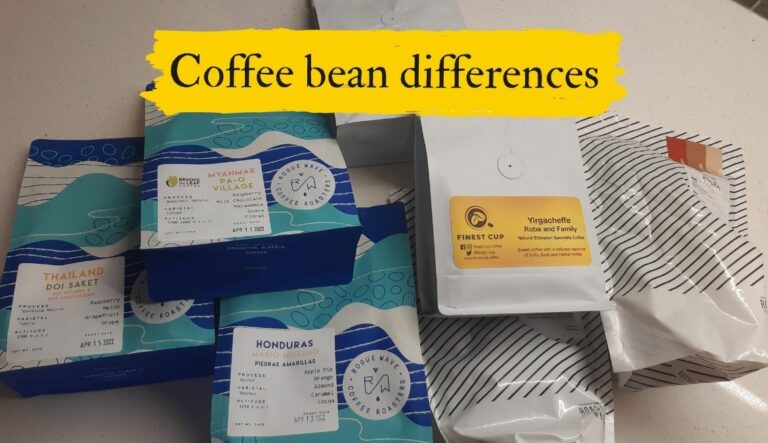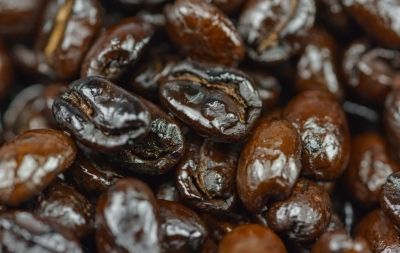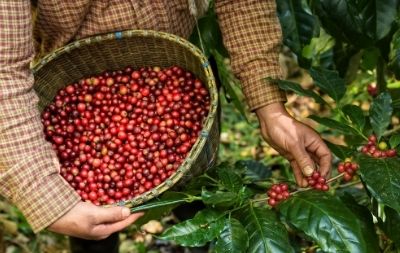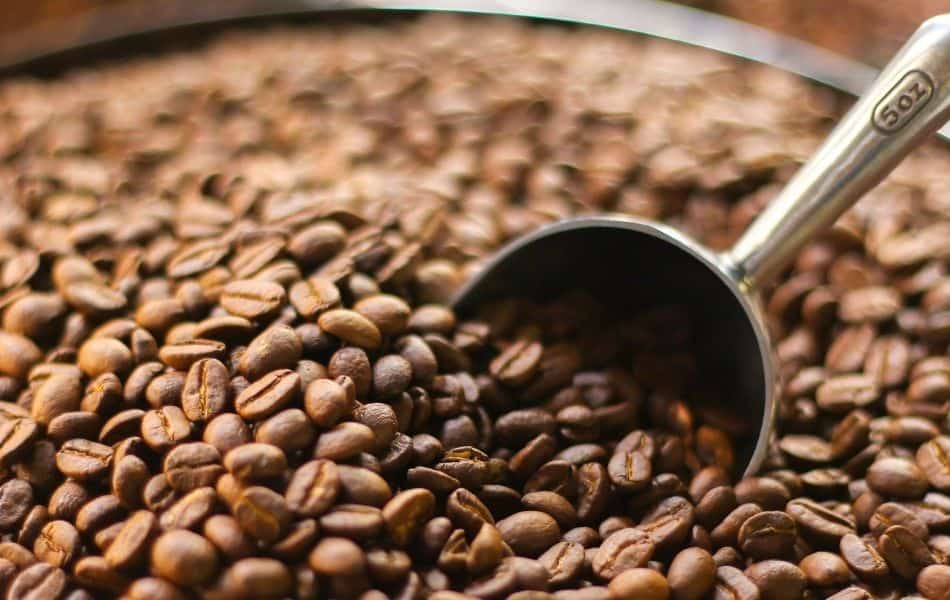
Whether you are making your coffee in a French press, a Moka pot, a Turkish cezve, or just plain old instant coffee, you generally need to know how much coffee to use. Few people like coffee so weak that it may as well be coffee-flavored water, but at the same time, not many people are keen on coffee so strong that it turns your face inside out!
Measuring coffee without a scoop is not as hard as you might think since the tricky part of measuring your coffee is knowing how much is right for a particular brew, and a scoop can’t tell you that anyway.
So, how do you measure coffee without a scoop? The most accurate method is by using a food scale to measure a 1:16 ratio of coffee-to-water in grams, which would be 22 grams of coffee for 350ml of water. You could also measure slightly less than 4 tablespoons of whole coffee beans, which weigh about 6 grams each.
The 1:16 golden ratio of coffee to water is something that many coffee enthusiasts strive for, and if you are concerned enough about your ratio, let’s take you through some more in-depth information. Who needs a scoop, anyway?
The Golden Coffee Ratio
A term like “the golden ratio” can be a little misleading, as there is no one ratio to rule them all, so to speak. Depending on the brand of coffee, the way it is being made, and of course, the person drinking it, the exact ratio will change. But the principles behind that ratio remain the same.
You are looking to balance out the acids and bitter notes while keeping the sugars present enough to be refreshing and pleasant on the tongue. Generally speaking, you want your cup of joe to be in perfect harmony.
While everybody is different, there is a cautious consensus among coffee enthusiasts that the sweet spot is around the 1:16 mark. That is one part coffee to sixteen parts water. For most of us, the “part” is usually a gram, though it doesn’t matter what units of measurement you use as long as the ratio is correct.
Now, you may prefer your coffee a tad more bitter, in which case you might dilute the brew more with a ratio like one part coffee to eighteen parts water. Or, perhaps you like your coffee to be a little sour, in which case you might choose to up the coffee content with a ratio closer to one part coffee for fourteen parts water. There is no rule that says you can’t adjust the ratio even further than these two examples, of course, but for the vast majority of people, the sweet spot is not too far from that one part coffee to sixteen parts water mark.
Weighing coffee with a food scale
Once you have decided on your personal golden ratio (we are going to stick with 1:16 for the rest of this post), you can set about measuring things out. We tend to think the best way of doing this without a scoop is through the use of kitchen scales.
In fact, I recommend using a food scale to measure your coffee even if you do have a scoop handy.
The scales will give you an accurate representation of how much coffee you have, whereas a measuring scoop or spoon can be misleading due to the air gaps between coffee grounds. This becomes a bigger problem the larger the coffee grounds are, with instant coffee being the worst offender. Then again, if you are using instant coffee, you don’t need to be that accurate with your measurements.
How to weigh coffee using a scale
Always remember to zero your kitchen scales before starting so that you are measuring just the coffee and water and not the containers that they are in.
The quickest way to do this is to pour the amount of water you are going to use into a container, seeing how much that water weighs, and then dividing the amount by sixteen (or whatever ratio you chose). Then, take your water off of the scales and measure out your coffee until it matches one-sixteenth of your water.
The same basic principle applies when measuring your coffee out with a spoon, though it wouldn’t exactly be practical to measure out your water in spoonfuls. The main thing is to make sure is that you measure your water and coffee in the same way; otherwise, your ratios will be all out of whack.
Weighing coffee with a tablespoon
A kitchen tablespoon will hold about 6 grams of whole coffee beans. Knowing this, you can divide your desired weight of coffee by 6 to determine how many tablespoons you need.
For example, for a common 350ml cup of coffee, you would need about 22 grams of coffee (6:350 = 1:16). That would be a little less than 4 tablespoons of coffee beans because 6 x 4 = 24 grams.
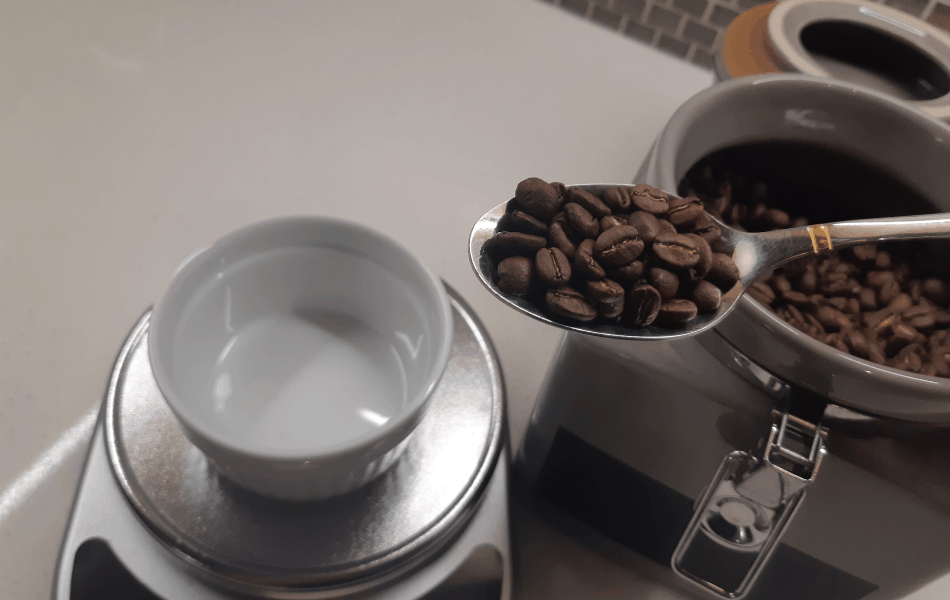
Measure your coffee by counting beans
If you don’t have a food scale or tablespoon then you could consider counting your beans by hand. 1 gram is approximately 7 coffee beans. That means you would need 154 beans for 22 grams of coffee.
I wouldn’t recommend counting all 154 by hand. But you could find a spoon of any size or another small scoop-shaped item, and count how many beans it takes to fill it. Then simply divide your desired coffee weight by that number to learn how many scoops you would need.
How accurate does your measurement need to be?
The degree to which you want your measurements to be accurate will primarily be dependent on how much of a coffee aficionado you are. If you like your coffee but wouldn’t call yourself an enthusiast, you probably don’t need to worry about being super accurate with your measurements because there is a good chance you won’t notice the difference.
The same applies to anyone, coffee enthusiast or not, who is using instant coffee. Instant coffee has its place, but it is not the go to choice for when you want a great cup of coffee, and for a good reason.
If coffee is your life, on the other hand, if you find it hard to swallow coffee that has been made poorly and absolutely must have only the best grounds in your brew, then we would suggest getting a proper setup for your home.
This doesn’t necessarily mean buying any expensive utensils or equipment, however. A scoop would be useful, but, really, this means experimenting to find the best ratio for you personally and then ensuring that you can replicate that ratio easily, without having to weigh coffee and break out a calculator to determine how much of it you need.
A good way to streamline your coffee measuring process would be to establish your ideal measurements of coffee and water and then translate each of them into a more manageable method of measurement. For example, let’s say that, for some reason, you did decide to measure out your water using a spoon.
Rather than meticulously spooning your water directly into the French press, measure it into a liquid measuring jug and take note of how much water is actually in there. Do the same with your coffee (though for coffee, the spoon might be a better option). This way, when you come to make your coffee next time, you’re not having to weigh coffee or spoon out thirty plus spoonfuls of water.
What else?
Measuring the right amount of coffee and water is a big part of making the perfect cup of coffee, but it is not the only thing you can do. For example, the water you use makes a big difference. If you want the absolute best from your coffee, you should only ever use filtered water. Water from a typical faucet contains chemicals that are put there to keep the water safe for human consumption. A change in flavor is unavoidable when adding chemicals to water, despite every effort taken to make it tasteless. Still, it is the way those chemicals combine with the acids in coffee that can affect the flavor of your brew.
Now, understand, we are not saying that using tap water will drastically affect the taste of your coffee. But if you are concerned enough about measuring your coffee correctly to be reading this post, you will probably want to be using filtered water when you make it. And, of course, it should go without saying that your pots, mugs, and anything else you use when making the coffee should be thoroughly cleaned.
Finally, always make sure you are using your tools correctly. Read a post or two on your favorite coffee-making method. Watch a YouTube video. Get advice from someone who knows what they’re talking about. Each method of making coffee is different, and, for your method of choice, you should be familiar not only with the how but the why as well. One of the most common mistakes people make with any method of coffee-making is rushing the process. A good cup of coffee will take time.
Final thoughts
We can’t tell you that you should be taking your coffee measurements less seriously, though it would be reasonable to say you shouldn’t be losing sleep over the fact that you might not be getting the most accurate coffee measurements known to humanity.
In all likelihood, you will hit a point of diminishing returns before you reach a point where you can’t improve on the accuracy of your measurements. In other words, your tastebuds probably aren’t up to the task of distinguishing between a drink with 1g of coffee and a drink with 1.03g of coffee, and there’s not much point in trying to improve your methods beyond what you can taste.
Of course, we are certainly not encouraging you to throw any pretence of caring about the quality of your coffee out of the window, but maybe don’t start counting coffee grounds the next time you start measuring out your ingredients for that perfect golden ratio.

